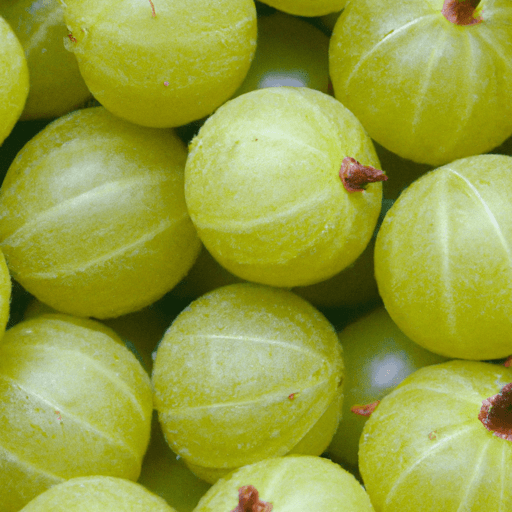Amla Fruit: The Nutrient-Packed Superfood for Your Culinary Adventures
Amla, also known as Indian gooseberry or Emblica officinalis, is a small fruit that packs a powerful punch. With its tangy flavor and extensive health benefits, amla has become a popular ingredient in various cuisines around the world. In this blog post, we will discover the taste profile, common uses in cooking, nutritional value, and some fascinating facts about this versatile fruit.
Taste Profile
Amla fruit offers a unique taste that combines sour, tangy, and slightly bitter flavors. The initial tartness is followed by a subtle sweetness, making it a delightful addition to many dishes. The flavor intensifies as the fruit ripens, resulting in a stronger sourness.
Common Uses in Cooking
Amla fruit is highly versatile and can be utilized in a multitude of culinary applications. Let’s explore some of the most common ways it is used:
1. Pickles and Chutneys
A popular way to preserve and enjoy amla is by pickling or incorporating it into chutneys. The tangy flavor and firm texture of amla make it an excellent candidate for pickling, adding a zesty kick to any Indian meal. The pickled amla can also be used as a condiment or as an accompaniment to cheese platters and charcuterie boards.
2. Juices and Smoothies
The high vitamin C content of amla makes it an ideal ingredient for refreshing juices and smoothies. Blending amla with other fruits like mango or pineapple creates a vibrant and nutritious beverage bursting with flavors. Amla juice is also believed to have various health benefits, including boosting immunity and aiding digestion.
3. Desserts
Amla can be transformed into delectable desserts, balancing its tartness with sweetness. From jams and jellies to amla-infused cakes and tarts, this fruit can add a unique twist to your sweet creations. It is often used in traditional Indian sweets like murabba and amla barfi, lending an irresistible tanginess to the desserts.
4. Amla Powder
Dried and powdered amla is a staple in Ayurvedic cooking. It is used as a natural flavoring agent in spice blends like chaat masala and as an ingredient in herbal formulations. Amla powder can also enhance the nutritional value of smoothies, energy bites, and even face masks.
Nutritional Value
Amla fruit is not only a culinary delight but also a nutritional powerhouse. Packed with essential vitamins, minerals, and antioxidants, it offers an array of health benefits. Here’s a snapshot of its impressive nutritional profile:
High in Vitamin C: Amla is renowned for having one of the highest natural concentrations of vitamin C. This antioxidant-rich vitamin helps boost immunity, promotes healthy skin, and aids in collagen production.
Rich in Antioxidants: Amla contains potent antioxidants like flavonoids and polyphenols, which protect the body against free radicals and oxidative stress.
Good Source of Fiber: Amla is rich in dietary fiber, aiding digestion and promoting a healthy gut.
Abundance of Vitamins and Minerals: It provides a range of other essential vitamins and minerals, including vitamin A, vitamin E, calcium, iron, and potassium.
Fascinating Facts about Amla
Amla has a rich history and several interesting facts associated with it. Here are a few to pique your curiosity:
Ayurvedic Wonder: Amla has been used in Ayurvedic medicine for centuries due to its numerous health benefits. It is believed to balance the body’s doshas, improve eyesight, promote hair health, and rejuvenate the skin.
Long Shelf Life: Fresh amla fruit has an impressive shelf life, lasting up to six months. This longevity makes it a valuable ingredient, particularly during times when fresh produce is scarce.
Hair Care Hero: Amla is a common ingredient in hair care products, thanks to its ability to strengthen hair follicles, reduce dandruff, and promote healthy hair growth.
Environmental Harmony: Amla trees play a crucial role in maintaining ecological balance. They help prevent soil erosion, provide shade, and support the growth of other beneficial plants in their vicinity.
In conclusion, amla fruit is not only a culinary delight but also a nutritional powerhouse. From pickles and juices to desserts and powders, its tangy flavor and nutritional benefits have made it a cherished ingredient across a wide range of cuisines. So why not explore the versatility of amla and enhance your culinary repertoire with this nutrient-packed superfood?
Amla Fruit
Origin: Amla, also known as Indian Gooseberry, is native to the Indian subcontinent, including India, Nepal, Pakistan, Sri Lanka, and the Maldives.
Common Uses: Amla is a versatile fruit that finds various uses in culinary, medicinal, and cosmetic applications. It is commonly used in Indian cuisine for making chutneys, pickles, and jams. It is also used to make candies, refreshing drinks, and as a flavoring agent in curries. Amla is a key ingredient in the traditional Ayurvedic formulation, Chyawanprash, a health tonic.
Nutritional Benefits: Amla is highly valued for its exceptional nutritional composition. It is a rich source of antioxidants, including vitamin C, which helps boost the immune system, promotes healthy skin, and supports overall health. It also contains vitamin A, vitamin E, dietary fiber, and minerals such as calcium, iron, and phosphorus. Additionally, amla is believed to possess anti-inflammatory and anti-cancer properties.
Unique Properties: Amla has some unique properties. Firstly, it is one of the richest natural sources of vitamin C, containing more vitamin C than oranges. Secondly, amla has a high tannin content, which gives it a sour and astringent taste. These tannins contribute to its antioxidant and anti-inflammatory properties. Finally, amla has a peculiar tart flavor, which can take some time to get accustomed to.
Historical Significance: Amla has a long history of use in Ayurvedic medicine, dating back thousands of years. It is considered a Rasayana (rejuvenating tonic) in Ayurveda and has been used to promote longevity, enhance digestion, improve skin health, and support the respiratory system. Amla’s medicinal properties have also been recognized in traditional medicine systems of other cultures, such as Traditional Chinese Medicine.




Use the share button below if you liked it.
It makes me smile, when I see it.